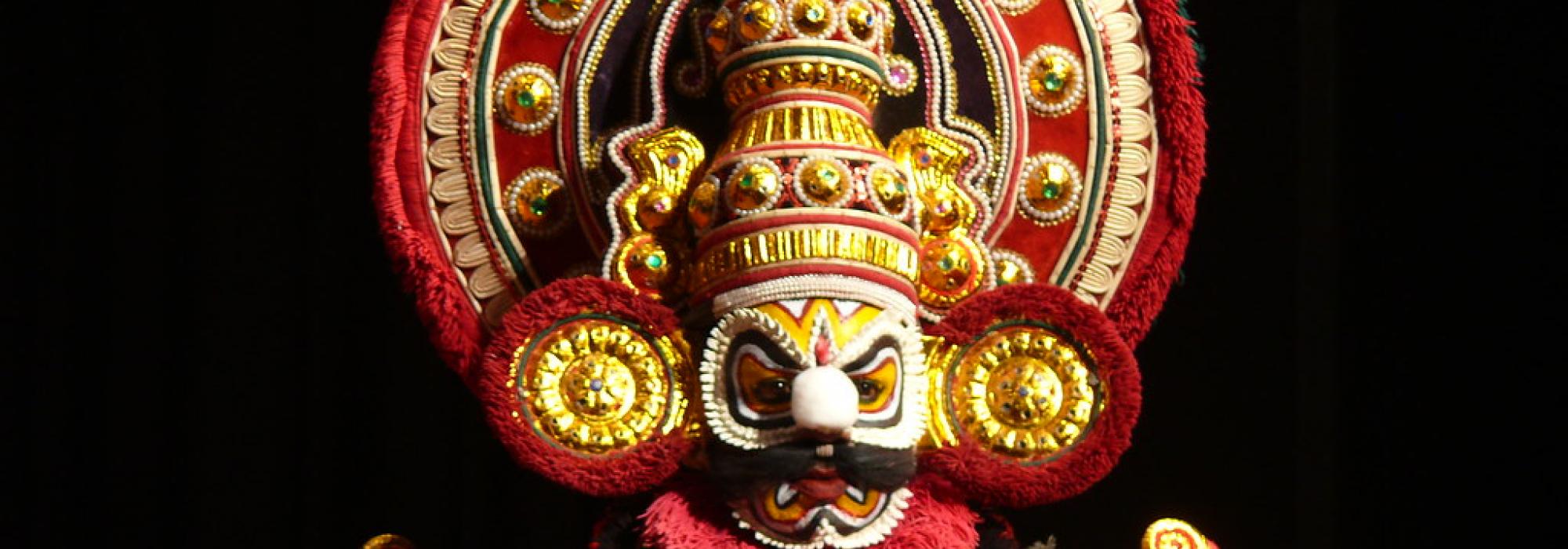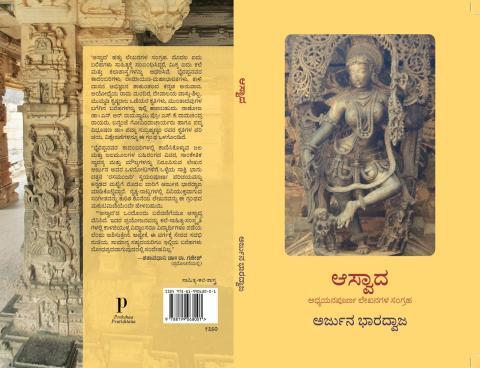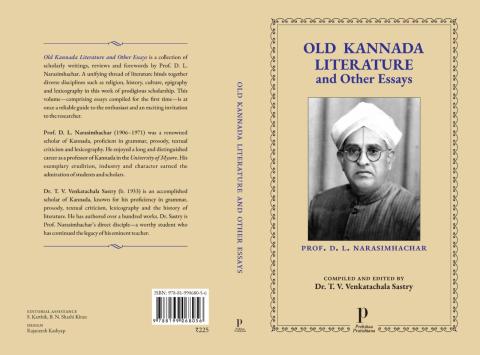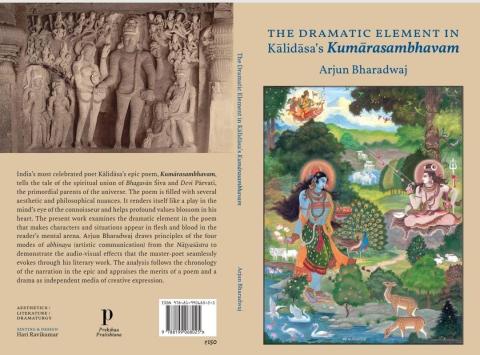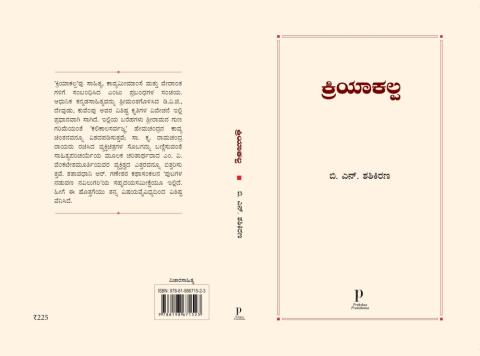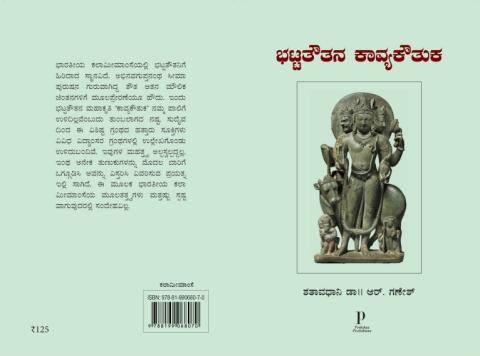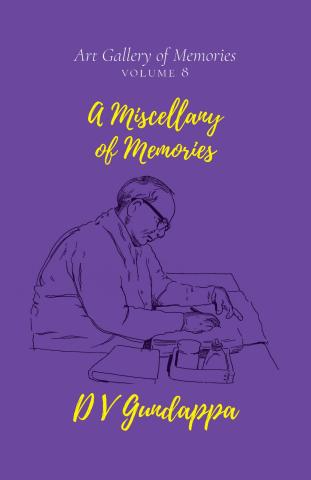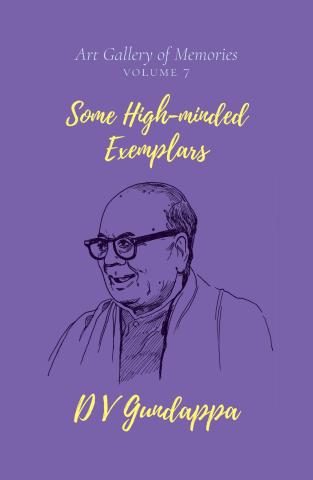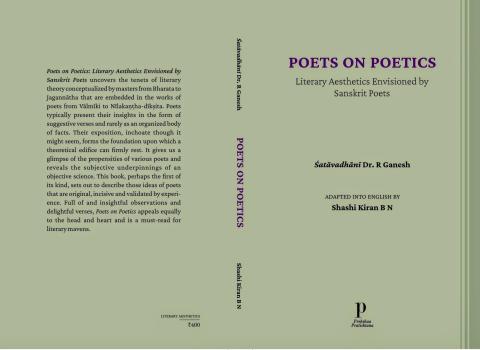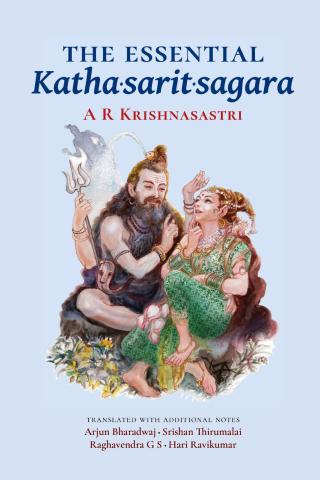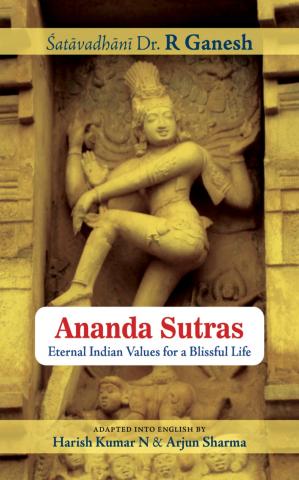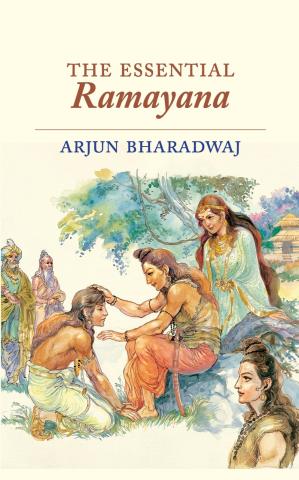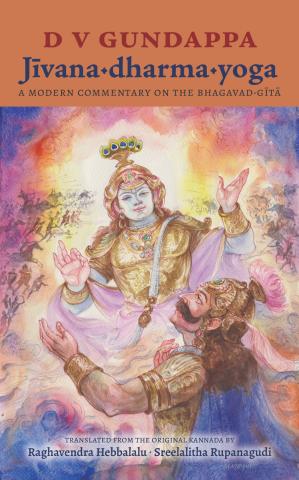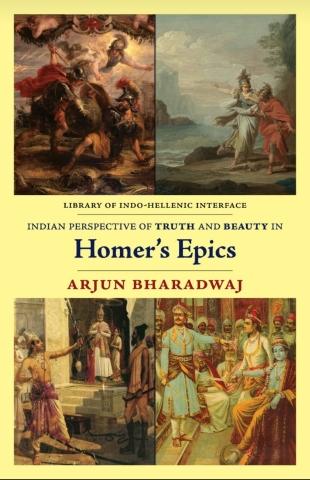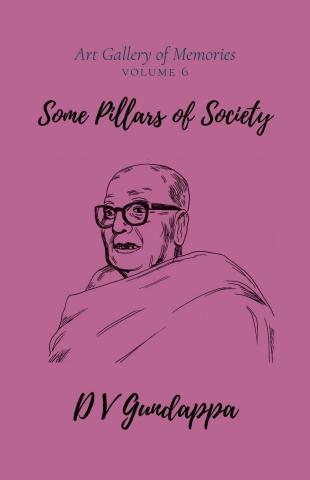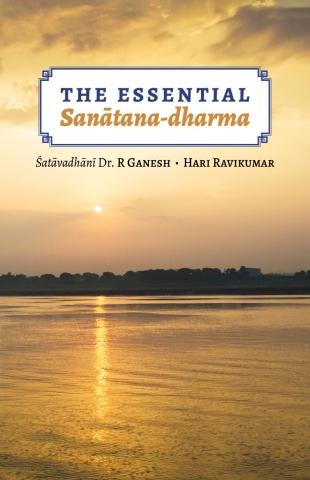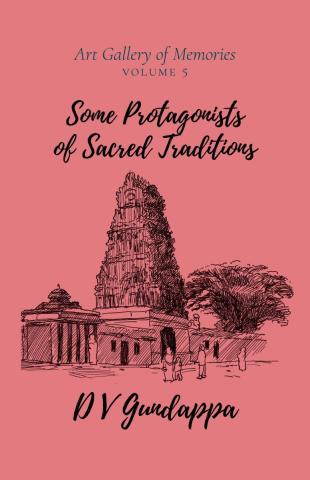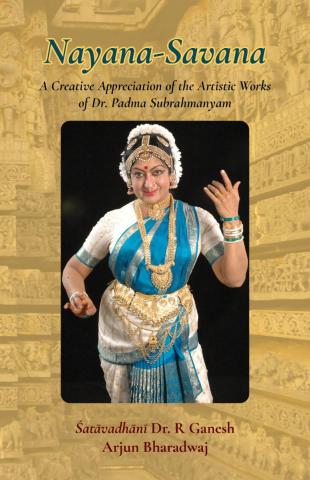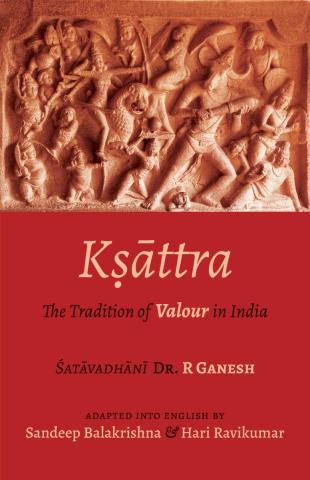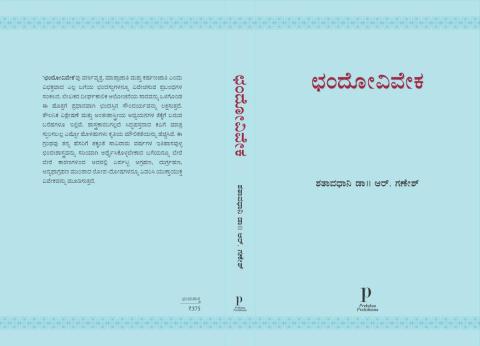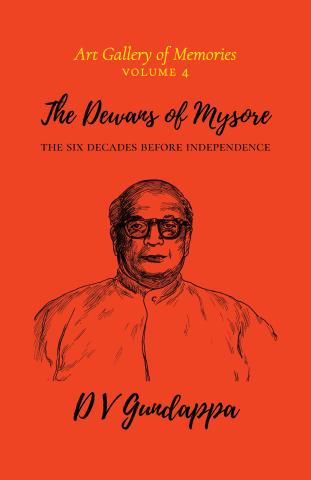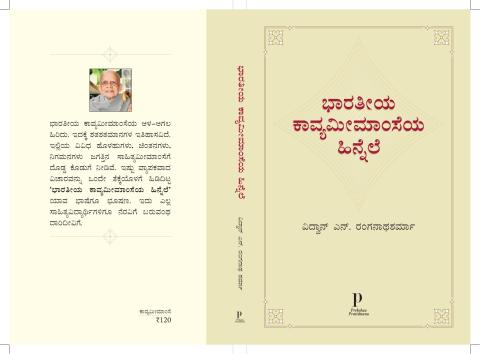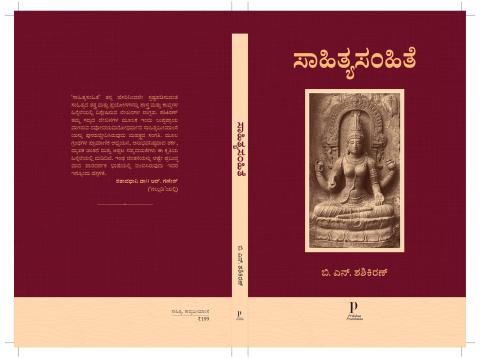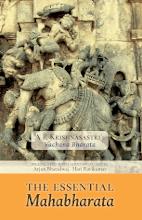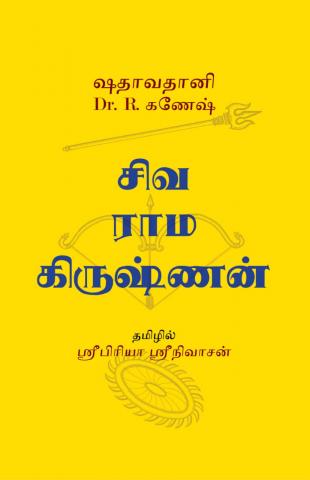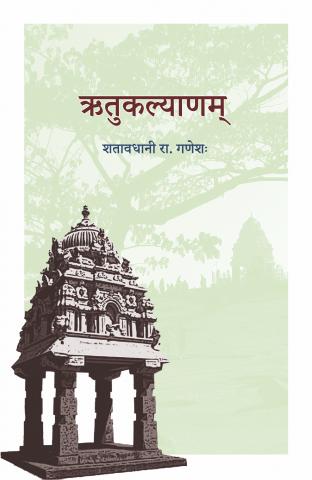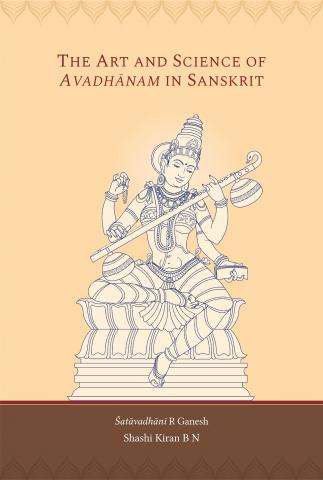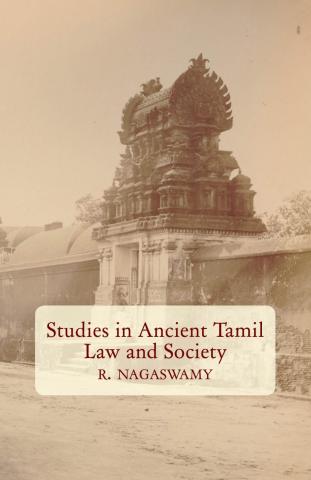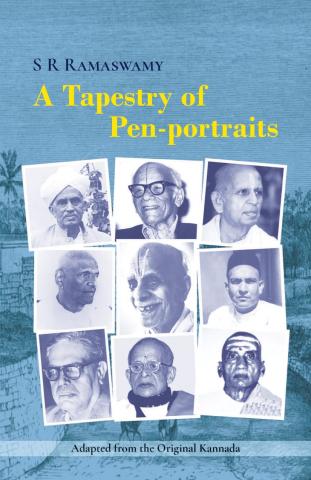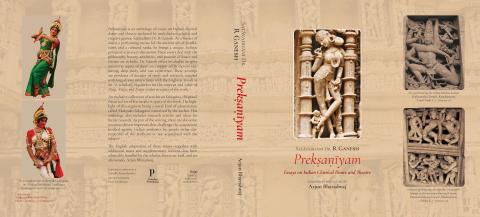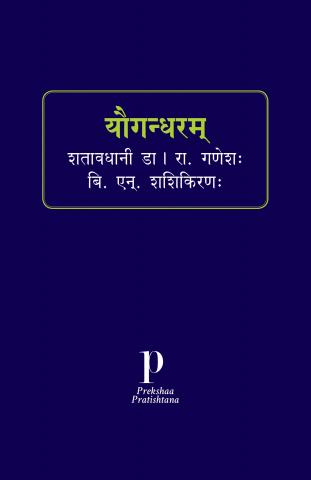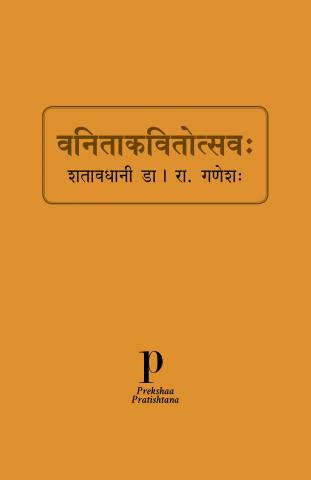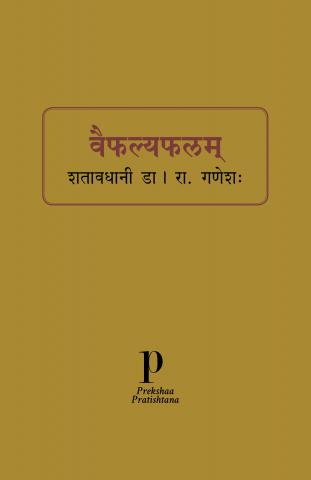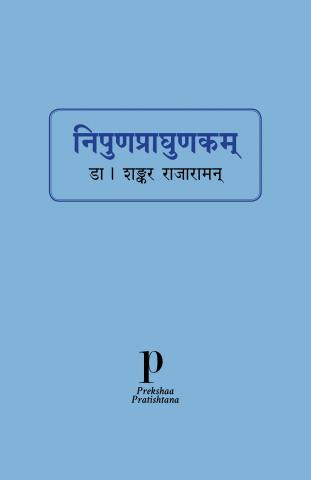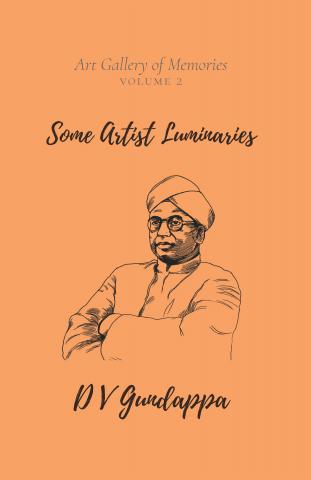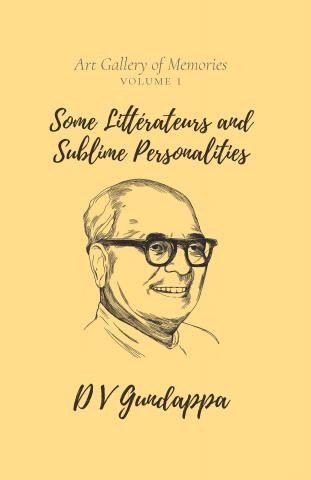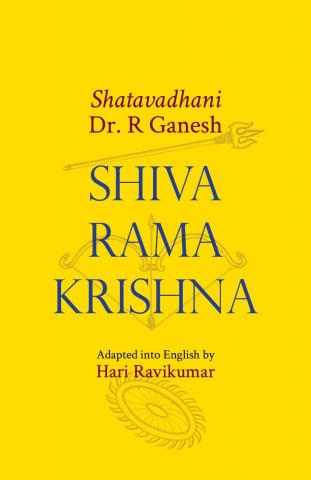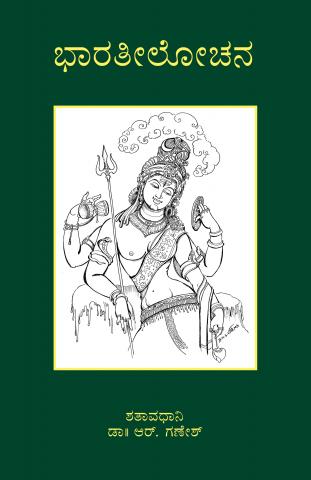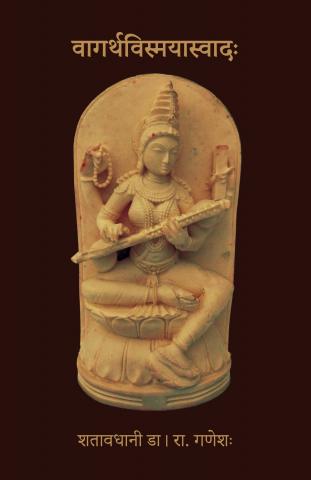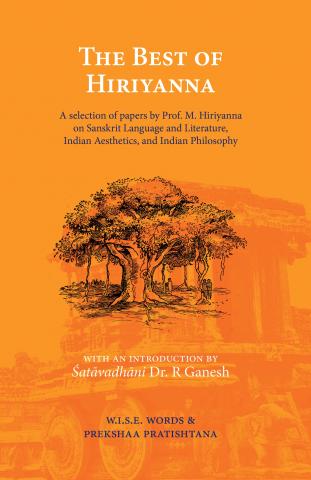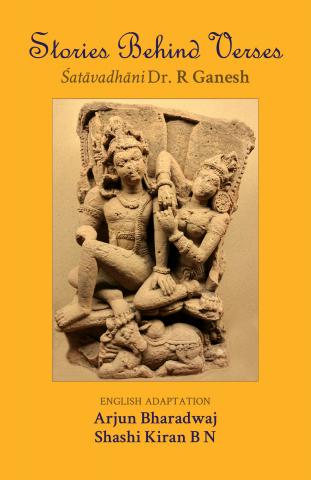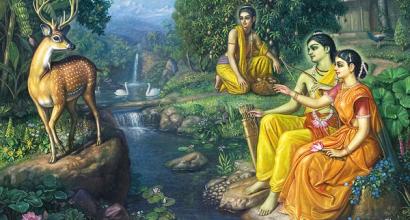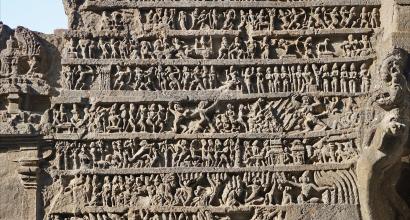An interesting feature of Yakṣagāna is that movements are adapted as per the bhūmikā, i.e., character. The hèjjès, sthānakas, and hastas are a function of the nature, age, and characteristic features of the character-type to be portrayed. The kirīṭa-veṣa, puṇḍu-veṣa, muṇḍāsu-veṣa, baṇṇada-veṣa (rāja-baṇṇa, kāḍu-baṇṇa, and heṇṇu-baṇṇa), strī-veṣa (prauḍa-strī, māyāṅganā, yodhā, and taruṇī ), hāsya-veṣa (hāsya-strī-veṣa, dūta, hanuma-nāyaka, rākṣana-dūta), kirāta-veṣa, vānara-veṣa, and others have their own set of defined movements.[1] This is, in fact, true of all theatrical forms of India. Melody and rhythm are also designed as a function of the character they need to accompany. Recakas, movements of different limbs of the body and the intensity of such movements are also different for different character-types. There are some differences in the dancing style as well. For example, the kirāṭa-veṣa [2]dances in an oblique manner in accordance with the korè-muṇḍāsu that comes as a part of its costume and has the recita of the shoulders more pronounced. The vidūṣaka (hāsyagāra) dances in the tirgāsu-naḍè. Baṇṇada-veṣas[3] take larger strides and are heavier in their footwork. The puṇḍu-veṣas dance like a bouncing ball and are full of energy. Their dance is at a slower pace compared to the kirīṭa-veṣas. Lāsya involving graceful and gentle movements is fundamental to strī-veṣa. Soft footwork, small footsteps, and gentle miḍukus (recakas) go well with the female character. Yuddhada-kuṇita, prayāṇada-kuṇita, and jalakrīḍeya-kuṇita [4]of Yakṣagāna are very special. These movements refer to a particular episode or emotion, so they are actually referential in nature. Though these are nāṭya in essence, they work largely like abstract nṛtta in their form and are naturally filled with different kinds of footwork, movement of the torso and circular motions. These are movements that can kindle the interest of those who are well-versed with the maṇḍalas and gati-pracāra of Nāṭyaśāstra. They might be able to find reflections of the Nāṭyaśāstra in the above-mentioned movements. Primarily, there are movements which follow an ‘S’ pattern, a ‘8’ pattern, and an ‘X’ pattern on the stage. Movement in circles is quite common too. However, all these kinds of movements emphasize footwork aligned to a fixed tāla pattern and they do not constitute wholesome āṅgikābhinaya. Therefore, connoisseurs interested in nāṭya as a whole may get slightly disappointed.
So far, we have examined some aspects of the āṅgikābhinaya of the Baḍagutiṭṭu Yakṣagāna of the Karāvali region of Karnataka. Let us briefly look at the other modes of abhinaya, the role they have played in the nāṭya along with their merits and demerits.
The himmeḻa that accompanies Yakṣagāna has played quite an important role in giving the impression that the nṛtta of the art form is dominated by hèjjègārike. The himmeḻa does not have any śruti-vādyas (melody instruments such as flute, violin, veena) for accompaniment and only has laya-vādyas (percussion and rhythm instruments such as caṇḍè and maddaḻè). The āvartas of a tāla cycle and the beats are indicated by gubbi-tālas and the āvartas are dependent on the chando-bandhas. The song is limited to a few maṭṭus and not full-fledged rāgas. The signing is mostly in tāra-sthāyi (higher octave) and is especially not melodious most of the times[5]. The dominance of laya-vādyas and the absence of śruti-vādyas could have led to the cultivation of footwork on a larger scale. Āṅgikābhinaya naturally follows the music ensemble.
The apparent limitations of the himmeḻa can be overcome by having melodic instruments like Nagaswara, violin and flute for accompanying the singing. Āṅgikābhinaya can then be refined in a manner that doesn’t affect the overall framework of Yakṣagāna. It should add beauty to the art and not take away any of the existing features.[6] The āhārya poses some limitations and constraints some aspects of āṅgikābhinaya – these have to be overcome too. The kind of changes brought about by Dr. Shivaram Karanth in the himmeḻa and āhārya of Yakṣagāna is worth noting in this context. Additionally, āṅgika, āhārya, and vācika that come as a part of Ekavyakti-Yakṣagāna of Sri. Mantap Prabhakar Upadhya and Yugala-Yakṣagāna (along with Sri Kondadakuli) can be observed and suitably adopted by other artists. As mentioned earlier, the work done by Guru Sanjeeva Suvarna of Udupi Yakṣagāna Kendra in refining the āṅgika in his presentation of different prasaṅgas must also be taken into account. Mantap has adopted cārīs such as Sthitāvarta, Baddhā, Vicyavā, Alāta, Cāṣagati, Ūrūdvṛtta, Utsyandita, Samotsaritamattalli, Nūpurapādikā, Mṛgapluta, and Ūrdhvajānu. He has also aesthetically employed nṛtta-hastas such as Keśabandha, Nitamba, and Ulbaṇa. They are great value additions to the Yakṣagāna vocabulary and connoisseurs have appreciated such movements. Other Yakṣagāna artists may also have a look at these and employ them as they deem suitable.
~
To summarize, it is my wish that Yakṣagāna charms national and international spectators and makes its mark on all the theatrical art forms around the globe, over and above what it has already accomplished over the years. It must develop a systematic pedagogy and also acquire recognition akin to Kathakalī, Kūcipūḍi, and other theatrical forms. Its āṅgikābhinaya must become richer and must subserve sāttvikābhinaya. The former should help in amplifying the effect of the latter. Additionally, the himmeḻa must undergo refinement, bhāgavatas need to be trained and the music must become more melodious. Excessive verbal communication should make way for holistic theatrical elements. Artistes of Yakṣagāna should never give up on aucitya and always keep Rasa-niṣpatti as the ultimate goal. The connoisseurs too should develop the above perspective towards the art.
Concluded
This series of articles are authored by Shatavadhani Dr. R Ganesh and have been rendered into English with additional material and footnotes by Arjun Bharadwaj. The article first appeared in the anthology Prekṣaṇīyaṃ, published by the Prekshaa Pratishtana in Feburary 2020.
[1] A veṣa refers to an archetypal character (i.e. character-type) of Yakṣagāna. For example, a kirīṭa-veṣa (literally ‘crown-costume’) can typically portray a king - Daśaratha, Naḻa, Duṣyanta, or Yudhiṣṭhira.
[2] costume of a hunter
[3] used for the depiciton of rākṣasas
[4] explain
[5] Higher octaves were used when Yakshagaana was Bayalaata – same need not be followed now too. <Baahya, Abhyaantara prayoga>
[6] See the essay ‘Innovations and Reformations in Yakṣagāna: Some Thoughts’ in this book.

